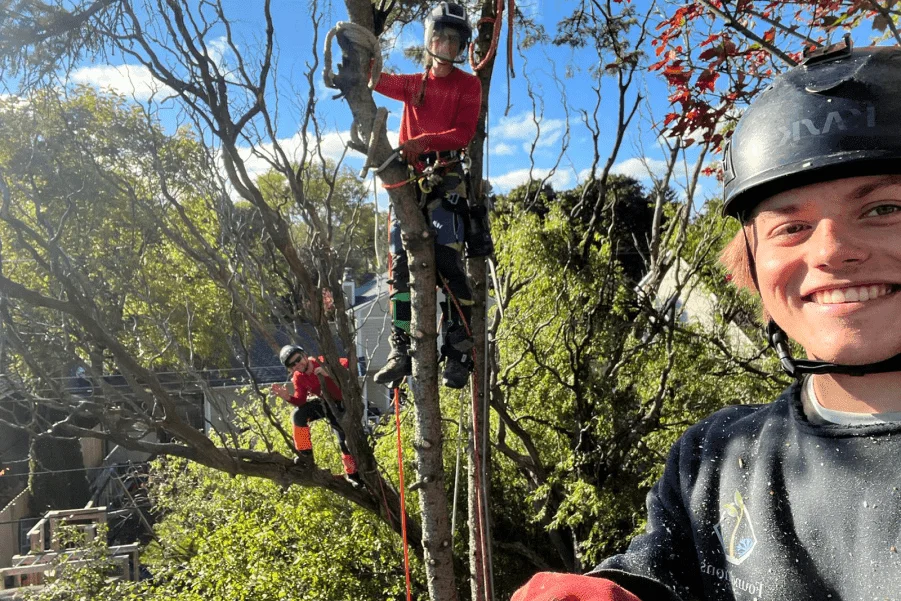Key Takeaways
Trees can look fine and still be at risk of falling
Common danger signs include leaning, cracked bark, dead limbs, and fungus at the base
Garrison Mull, owner of Dungrove, is ISA-certified and trained to assess tree safety
Free inspections are available if you’re unsure
Sometimes a tree falls without warning. But most of the time, there are signs—subtle clues that something isn’t right. Catching those early can prevent property damage, injuries, and expensive cleanups.
This guide will help you spot some of the most common warning signs. And if you’re still unsure, Garrison can come take a look and let you know what’s going on.
1. Leaning or Sudden Tilt
A tree that leans slightly may be fine—but if it starts leaning more over time, or suddenly looks like it shifted, that’s a red flag. Trees with root problems or soaked soil can begin to lean without warning. If it’s leaning toward your house, driveway, or power lines, it should be checked.
2. Large Dead Limbs
Dead branches are more likely to break, especially in wind or under snow. If you see large, bare limbs with no leaves during the growing season, that’s a sign the tree is struggling. Cracks or splits where the limbs connect are also trouble.
3. Cracks in the Trunk or Bark
Look at the trunk. Are there deep vertical cracks? Is the bark peeling or missing in large sections? Those can be signs of internal rot, weakness, or previous storm damage.
4. Mushrooms or Fungus Near the Base
Fungi like mushrooms growing around the base of your tree can mean the roots are decaying. And when the roots are weak, the whole tree is at risk. Not all fungus means disaster, but it’s worth having checked.
5. Trees with Two or More Trunks
Some trees naturally split into two or three trunks from one base. If those trunks grow apart at a narrow angle or have included bark (bark growing between them), they’re more likely to split. These trees need support or removal, depending on the size and condition.
What Makes a Tree Dangerous?
It’s not just about how the tree looks. A tree becomes dangerous when:
It’s unstable and could fall on something valuable (like your house)
It drops limbs big enough to cause damage or injury
It’s rotting from the inside or at the roots
Trees close to structures, fences, or utility lines should always be watched more carefully.
What to Do if You’re Worried About a Tree
Don’t guess. Don’t wait for a storm. Call someone who knows what to look for.
Garrison Mull, the owner of Dungrove, is an ISA-certified arborist. He’s trained in tree risk assessment and knows how to spot warning signs before they turn into bigger problems.
If he tells you the tree’s fine—you can trust it. If it’s not, he’ll explain your options.
Questions People Ask
Can a healthy-looking tree still fall? Yes. Some trees rot from the inside or lose root support without visible signs. That’s why we check below the bark and around the base.
Should I remove a tree just because it leans? Not always. Some trees grow that way. But if the lean is new, increasing, or aimed toward your house, it’s worth checking.
What’s the first step if I think a tree is risky? Contact us. Garrison will come out, inspect it, and give you clear advice. It’s free and could save you from a lot of trouble.
Get Peace of Mind About Your Trees
If something feels off, don’t ignore it.
Call, text, or message us to schedule a free inspection. Garrison will walk your yard, check your trees, and let you know what’s safe and what’s not.
No pressure. No sales pitch. Just smart, honest tree care from someone who’s certified to know the difference.

